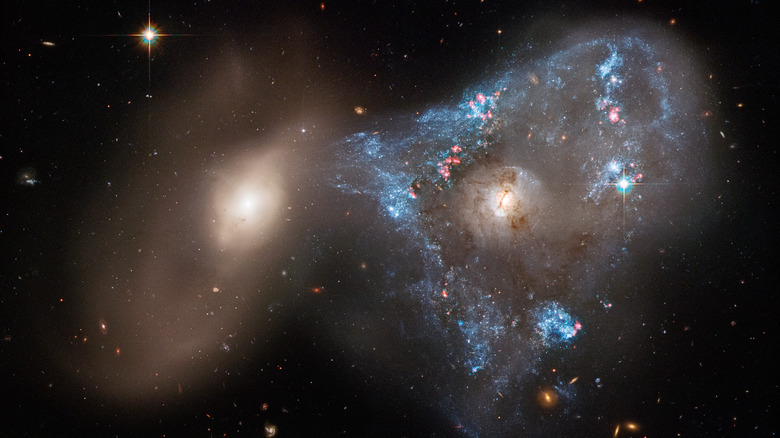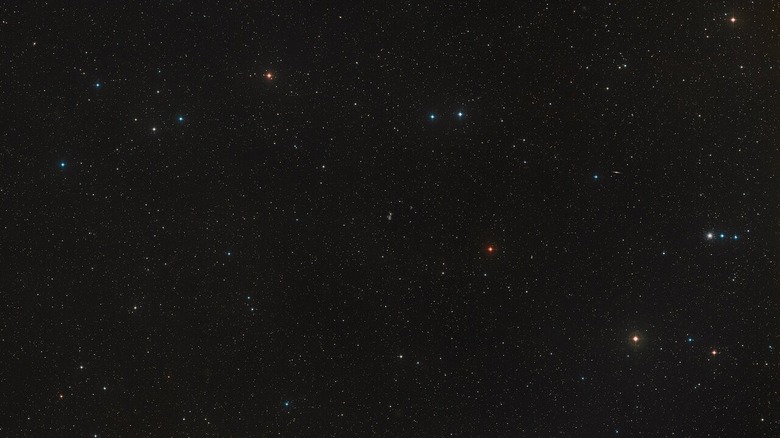Hubble Images Two Galaxies In Spectacular Head-On Collision
It's hard to imagine, but out in the depths of space, galaxies can collide with each other. The sheer scale of these events is mind-boggling, but when two galaxies meet they can either cause destruction, with one galaxy being annihilated, or creation, with the two merging together to form one larger galaxy. The Hubble Space Telescope recently captured one such collision in action, with two galaxies meeting in a formation known as Arp 143.
The two galaxies colliding are NGC 2445, on the right of the image, and NGC 2444, on the left. Their interactions have formed a striking triangle shape beautifully captured by Hubble. The enormous gravity of the galaxies affects their shape as well. If you look at galaxy NGC 2445 on the right, you can see that it is distorted as the gravitational forces pull at its edges.
But it isn't only destruction happening here – as the galaxies meet, there are stars being born amid the chaos as they form from the gas and dust present in both galaxies.
"Astronomers suggest that the two galaxies passed through each other, igniting the uniquely shaped firestorm of star formation in NGC 2445, where thousands of stars are bursting into life," Hubble scientists write (via ESA). "This galaxy is awash with new stars because it is rich in gas, the raw material from which stars are made. However, it hasn't yet escaped the gravitational clutches of its partner at left. The pair is waging a cosmic tug-of-war, which NGC 2444 appears to be winning. That galaxy has pulled gas from NGC 2445, forming the oddball triangle of newly minted stars."
A river of stars
It is a river of new, young stars which glow blue and form what looks like a bridge between the two galaxies. Astronomers estimate that the new stars are between 50 million and 100 million years old on average, but there are even younger stars in the center of galaxy NGC 2445 which are just one million or two million years old, which is the blink of an eye in the lifetime of a star (via ESA).
Astronomers want to observe the youngest stars at the heart of this galaxy as well. But there is a large amount of dust which obscures the view using visible light instruments like Hubble. However, it is possible to peer through this dust by looking in the infrared wavelength. The recently launched James Webb Space Telescope has a range of infrared instruments which allow it to look inside galaxies like these and get a better view of what is happening at their centers. Researchers are planning to use Webb to observe this region and find out more about the young stars shrouded by dust.

